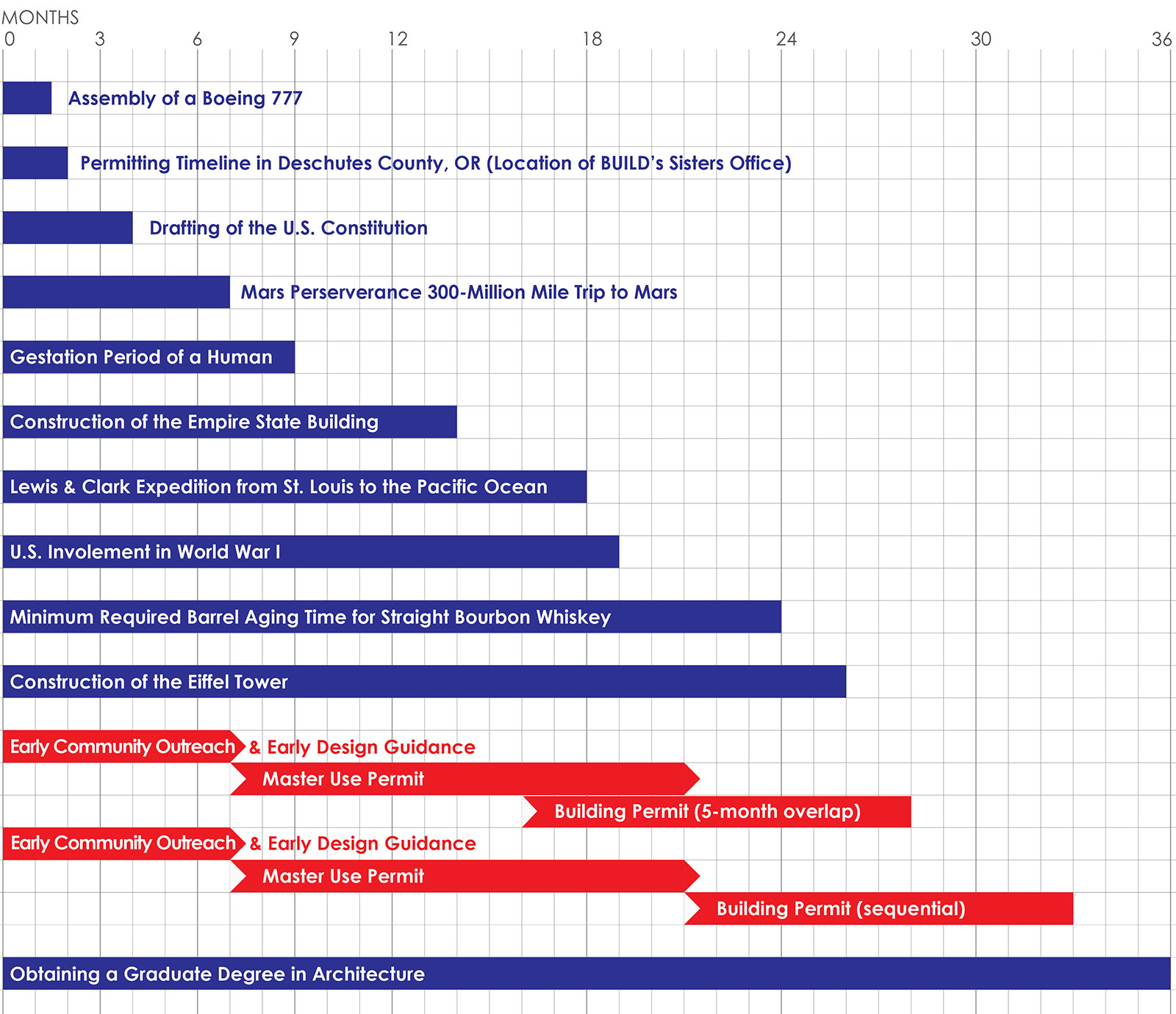Over the last several years, BUILD’s been hard at work on a handful of thoughtfully crafted, multi-family buildings, and like most architects, developers, builders and consultants, we’ve noticed a distressing trend at Seattle’s building department (SDCI). While neighborhood-friendly, modestly-scaled projects like these provide the city with important and necessary building blocks, they have also become the victims of constantly increasing land-use requirements and absurdly protracted permitting timelines. As of 2021, it takes a bewildering 2.5 years to get a small apartment building permitted in the City of Seattle. On average, these buildings contain about 30 apartment units, and the permitting includes the required sequence of Early Community Outreach (ECO), Early Design Guidance (EDG), a Master Use Permit (MUP), and finally, the building permit. Only at this point can a shovel be put into the ground. There are methods to overlap some of these permits and compress the timeline a bit, but they come at the risk of having to go back and significantly redo work if the City doesn’t like the design (and yes, the City gets to play designer).
Just as disturbing as the constantly escalating permitting process, is the growing acceptance of it. Land-use reviewers, City officials, and even some design professionals shrug it off, throwing their hands in the air when it comes to these completely unacceptable permitting timelines, as if to say, well, there’s nothing we can do about it. This is a system manufactured by humans, and we’d like to entertain the opinion that, as humans, we can do everything about it. This unchecked acceptance is turning us all into frogs in slowly boiling water.
The current system was manufactured, and it is by every measure deeply broken. Seattle needs a new strategic and healthy framework that equitably and effectively serves the community. Perhaps the first step is to simply acknowledge how bad things are.
Today’s post is a timeline comparison to illustrate how inefficient and counterintuitive permitting has become in Seattle. We’ve documented the average permitting timeline of small multi-family projects in Seattle alongside events of significance.
Whether you’re a design professional, a City employee, or a city dweller, you should be troubled by the fact that the entire assembly of a Boeing 777 comes in at 5% of the time required to simply permit (not build) a small apartment building in Seattle. It should be entirely unsettling to know that a rocket can reach Mars in a quarter of the time, and two Empire State buildings could be constructed sequentially in the same amount of time—to simply permit a small apartment building in the City of Seattle.
That the design profession, the construction industry, and property owners have become the prey of these rogue practices does not mean that they should be accepted or tolerated. Building departments and their dysfunctional systems may persist in turning up the heat, but some of us will continue to hold the thermometer up for everyone to understand the harm that is being done. Some of us may even hop out. The ripple effects are simply too consequential.








